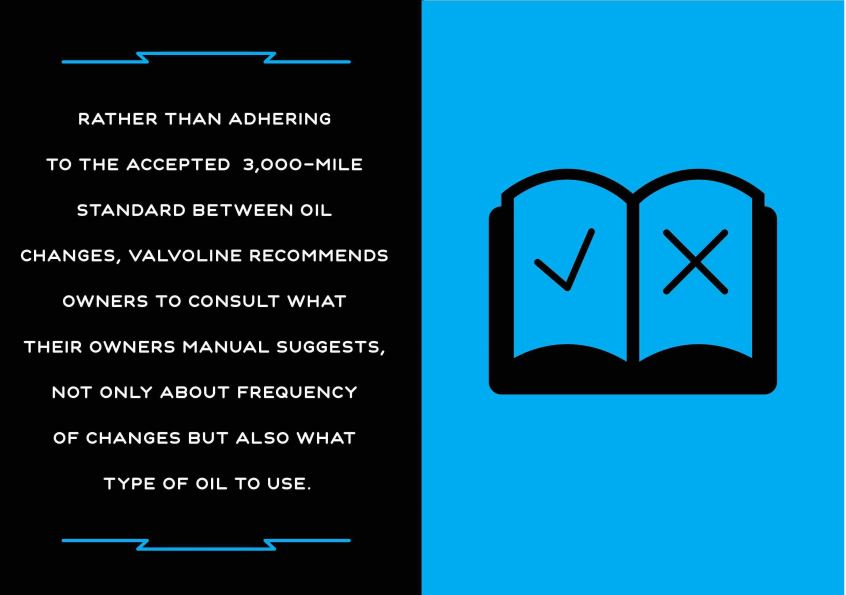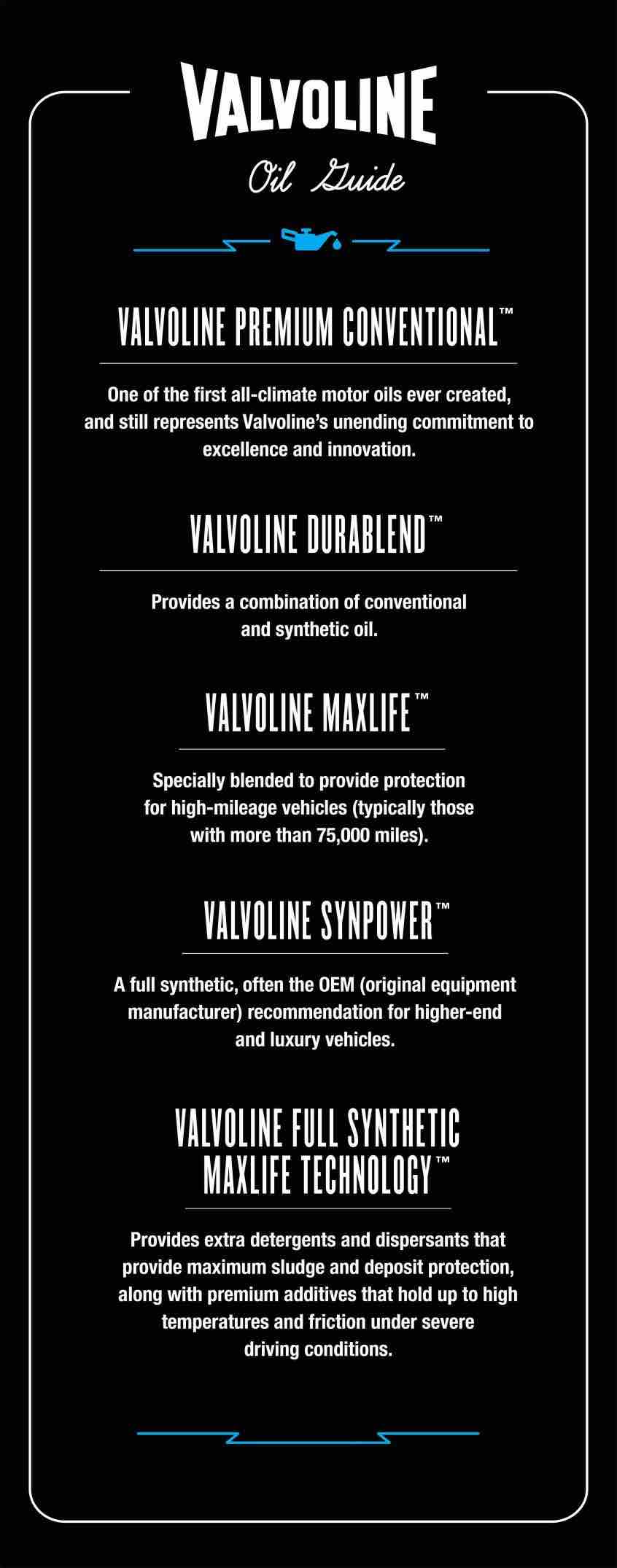
Even veteran mechanics sometimes miss reasons to use one type of motor oil over the other. You may be set in your ways, happy with your regular motor oil, to the point where you’ve maybe used the same brand, the same weight, and same type for years.
"But it’s always good to double check," according to Erin Findley, Valvoline™ Senior Scientist.
“You’re not really directly seeing the effects when you get your oil changed,” Findley says. “If you do something else, like you get a car wash, you can see the difference. But with your oil, the effects are mostly unseen until later.”
A few fundamentals

There are two main components of motor oil: base oil and additives. Additives perform functions like reducing wear and oxidation, cleaning up dirt/combustion by-products, and protecting against high and low temperatures.
Rather than adhering to the accepted 3,000-mile standard between oil changes, Valvoline recommends drivers consult their owner manual regarding both frequency of oil changes and what kind of oil to use.
“If you’re going longer (between oil changes), the contaminants stay in the oil, and that can lead to causing wear and other things that can be very damaging.”
And for those of you who push the envelope – intentionally or not – by going longer periods of time between oil changes, you may think you’re saving money because of how specialized or high-tech oil has become, or simply that your oil is still clean enough. In reality, you could be damaging your engine.
Valvoline Products

At Valvoline, our scientists and engineers are constantly innovating. The result: high-quality motor oils to help your vehicle achieve maximum efficiency, engine protection, and versatility. As consumers of motor oils, we produce products that we believe in and use in our personal vehicles.
The motor oil spectrum begins with conventional oil that is drawn from the ground, refined, and sold as essential, basic level protection.
• At Valvoline, that is our Premium Conventional brand grade.
• Next up the motor oil food chain is synthetic blend, which gives a vehicle a combination of coverage from conventional and synthetic oil. At Valvoline, that’s our DuraBlend™ brand.
• Then there’s MaxLife™, which is specially blended to provide maximum protection for high mileage vehicles, typically those with over 75,000 miles on their odometer.
• Next up is SynPower™, our full synthetic oil, which provides maximum synthetic protection. A full synthetic, often the OEM (original equipment manufacturer) recommendation for higher-end and luxury vehicles.
• And finally, there is Valvoline Full Synthetic with MaxLife Technology, which essentially covers all bases and all spectrums.
Tips For The Road
When choosing a motor oil, always consult your vehicle’s owner’s manual for compatibility and warranty information. And keep in mind these tips:
While veteran DIYers likely know this next trick, it’s worth repeating. In addition to what oil your owner’s manual suggests, also look for the API (American Petroleum Institute) specification on the back of each motor oil bottle or can. It’s a symbol with a circle called the “API Doughnut,” which indicates that the oil has passed a variety of engine tests and meets API certification.
You also want to see if there are the words “Resource Conserving” in the doughnut that indicates additional testing has been completed on some viscosity grades, which is required for fuel economy baselines. Also, look for a starburst symbol on the front of the bottle, which indicates the oil complies with standards and guidelines set by the International Lubricant Standardization and Approval Committee.
Lastly, but certainly not of least importance, is what is called the “W factor” when it comes to oil. “W” stands for Winter.
It used to be conventional wisdom that you’d buy 10W-30 or 10W-40 (most typically) and base your usage of them upon on the season of the year. Not anymore. Now there’s a certain type of motor oil that you can use year-round.
“This might have been true when your dad was changing his oil, and especially your grandpa, because late last century was when multi-grade oils were actually developed,” Findley said. “So before that, you only had a 30-grade or 40-grade oil, so maybe you’d use 30 in the winter and 40 in the summer.”
“But now, we have 5W-30’s. The W represents your cold number, and then the 30 is your high temperature number. It’s all combined into one now, and you don’t have to change the viscosity grade with the changing of the seasons. It’s already incorporated into the oil.”


Don't miss out on new content
Thanks for signing up. Set your password and start earning reward points for everything you do on the site.
You already have a Team Valvoline account. Sign in here.
Did you forget your password?